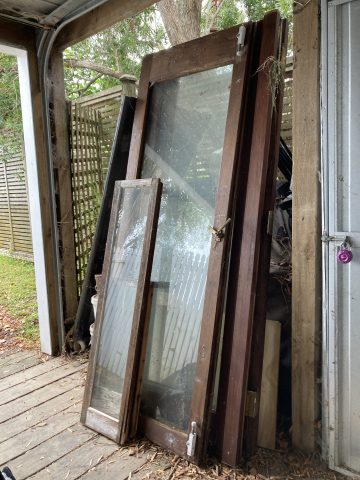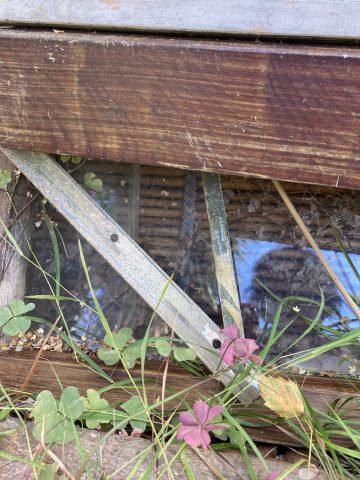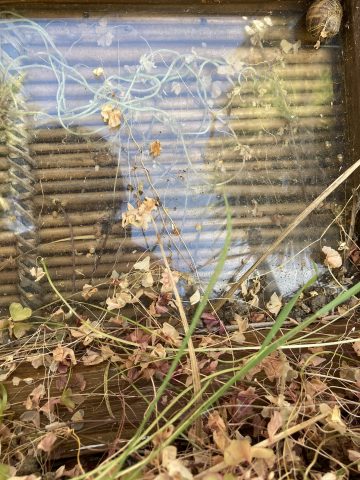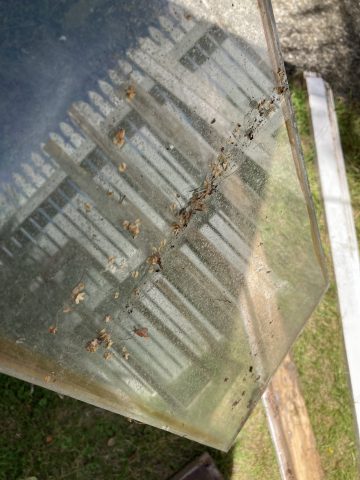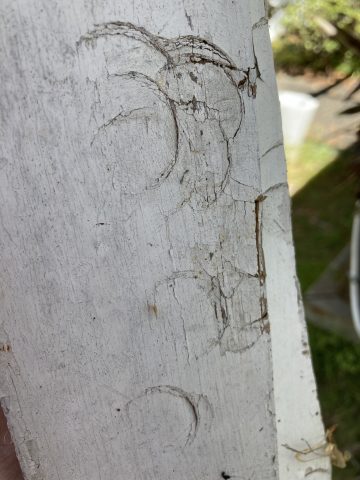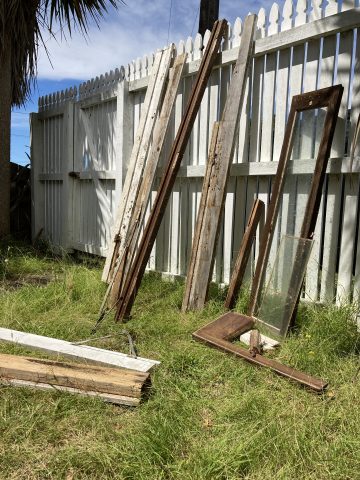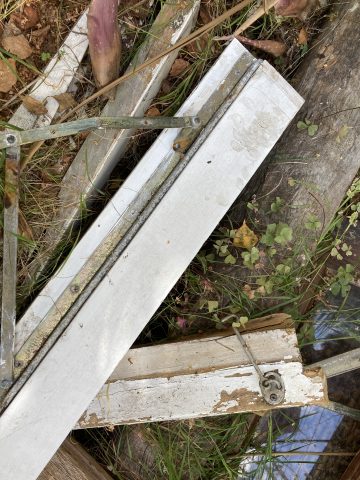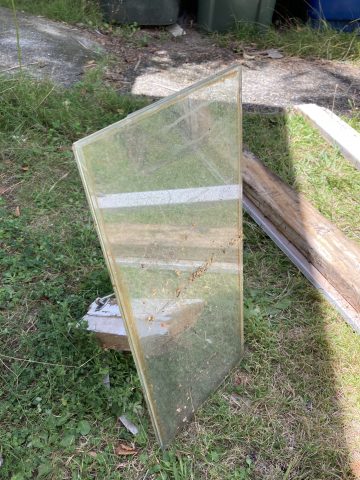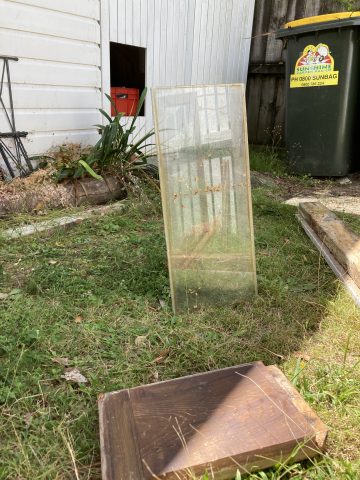What happens at the intersection of doors and windows, and the environment? As human and non-human bodies collide and cohabit, how do these bodies communicate? What are they saying? And, are we listening?
Like an areological dig in my front yard. I delicately pulled back one glass door after the other, each nestling a year’s worth of growth and decay within its glass corners and rimu frame. Too good to throw away, they were left to lie amongst the grasses that boundary my house.
I remember physically moving in-front of this stack of favourite French doors 12 months ago, fascinated by my fragmented and morphed reflection. They spoke to me then and they speak to me now – am I willing to listen?
I approach the work as if it were in a homicide scene, and I a forensic scientist, examining each piece, laying it out on the grass or propping it up on the fence, photographing the evidence. I notice joins and hinges and ageing weathered wood. I see trace of a hammer like bruises on an arm. I notice a very still snail, and a distressed spider abandoning its web-home. Between each stacked window pane are pressed dried flowers who had once tried to make a home between the slats. There is some dry earth embedded into the cervices but not a lot. Pesky seeds cling in bunches to the inner wooden frames, caught in the gaping cracks of the timber. The separated pieces now rest like beaten bodies amongst fallen cabbage tree fronds.
There is a single glass plane. I move it around in front of me as if holding the arms of a child — swinging around and around, body in flight. The glass face picked up reflections from the scene – the sky, the ground, the assembled items, still like the snail in the scene. I place the pane at different angles. Like a camera it captures various vistas in its mossy, smeared face. I move in close to see.
I then carry each found object into the garage. They are data, histories, findings, objects of interest, pieces of a past. They stand before me, stacked again, but on their feet this time, and I am present to them. I photograph them as if it is a family portrait – grown-ups at the back, kids in front. They stand like a family at the train station waiting for collection. Run I want to say – go! But they are unmoving. I smell their pungent breath unable to exhale.
